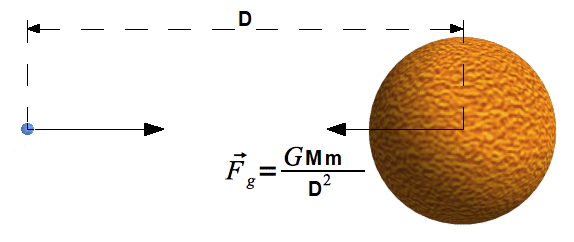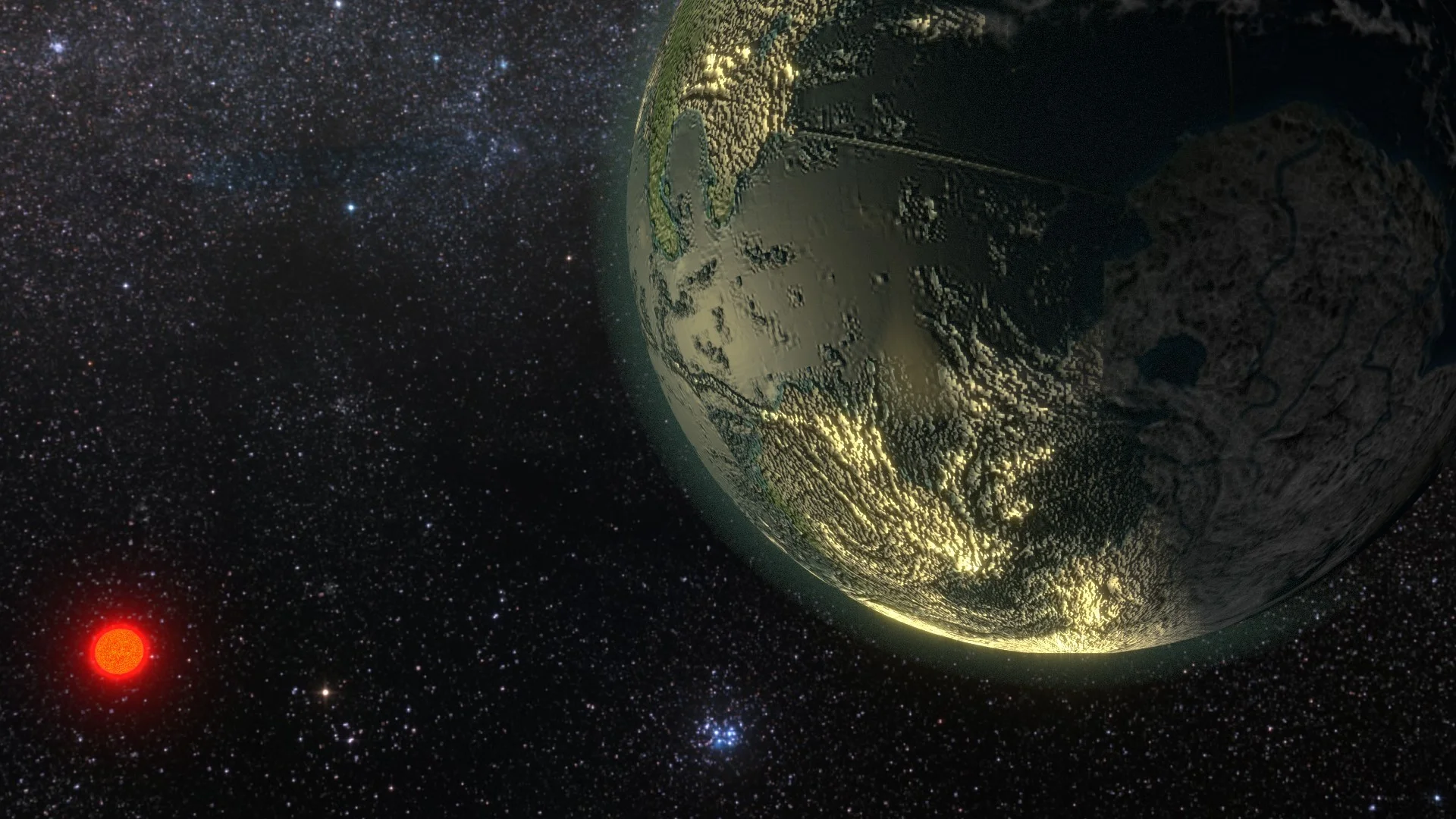The rotational inertia of an object (represented by \(I\)) measures how difficult it is to get an object spinning if its angular velocity is zero or how difficult it is to slow down an object's angular velocity to zero if it is already spinning. How much or how little rotational inertia an object has depends on its mass and how that mass is distributed across space. For example, a hollow sphere with just as much mass as a solid sphere has more rotational inertia. Hollow spheres of equal weight as solid spheres are thus more difficult to get spinning or to stop their rotational motion if they're already spinning.
Technological Revolutions
This article will represent the beginning of a new series in which we look at the future of technology and how it will impact our civilization. In this article in particular, we’ll talk about the potential impacts of room-temperature superconductors and we’ll also discuss the history of technological revolutions and how they enhanced our biology over the course of millions of years. This will lead us to a concept coined by the cosmologist Max Tegmark called “Life 3.0.” We’ll discuss how the third industrial revolution will differ from all other prior technological revolutions in that it’ll produce technology which will allow us to enhance the functionality of our own biology.
Robots and their Uses
As the title suggests, in this article we’ll be talking about the future of robotics, AI, and automation. We’ll have pretty detailed discussions on driverless vehicles (which can be thought of as robots), agricultural robots, manufacturing and construction robots, and retail robots. We’ll also briefly talk about things like nanobots and some of the kinds of robots we could use in space. We’ll also have a discussion about “big numbers” and the kinds of weird quantum effects that we’d expect to occur over long time intervals. Lastly, we discuss the scientific possibility of the holy grail of Star Trek - universal assemblers.
Utopia: Life in the Year 2100
In this article, we’ll speculate about what the world will look like in the year 2100. We’ll discuss things like robot chefs, virtual and augmented reality, and transhumanism just to name a few; we shall also, briefly, allude to a discussion on living on Uranus’s moon, Miranda.
Super Intelligence: Rise of the Machines
This article will be the beggining of a new series in which we examine the effects that artificial intelligence (AI), robots, and automation will have on human civilization. In this article, we’ll primarily be focusing on the implications of artificial general intelligence (AGI).
String Theory and Colonizing the Multiverse
In this article, we’ll talk in laymen terms about quantum theory and general relativity and, specifically, how the two are related. We shall begin by discussing the well-known fact that these two theories—which describe how the universe works on the scale of the very small (quantum theory) and the very large (general relativity)—oftentimes contradict one another and they usually contradict each other on the scale of the very small (which is where general relativity breaks down and quantum mechanics gives us the correct picture). Now, something that is a little less well-known is that quantum theory and general relativity seem to, in some strange sense, make similar predictions about how nature is on vast size scales. Both theories predict that there are other universes and extra spatial dimensions. We shall close our discussion in this article by answering a question that we posed at the end of the article, Orbital Rings and Planet Building.
Star Lifting: Colonizing the Stars and the Galaxies
In this article, we’ll discuss star lifting and its applications to interstellar and intergalactic space travel.
Spaceship Comets and Highways Through Space
In this article, we’ll look at various different ways we could travel to the stars. We’ll first discuss how very small, but very fast probes could be accelerated to relativistic speeds using lasers (or masers); such probes could reach the nearest stars within the span of a human lifetime. This discussion will also lead us to the notion of an “interstellar highway” which we’ll discuss in detail. We conclude by discussing how asteroids and comets could also be used as spaceships to reach the stars.
Preliminary Interstellar Missions: Prelude to the Stars
In this article, we discuss preliminary interstellar missions which will serve as preludes to missions involving sending spacecraft to stars. We primarily discuss using the Sun as a gravitational lens - a kind of “cosmic telescope” - to search for exoplanets which likely harbor life as well as those which likely do not.
Leaving the Solar System: Introduction to the Outward Bound Series
This article is essentially a “teaser” of what we have in store for upcoming articles. Basically, I summarize ideas that will be discussed in tremendous detail in subsequent articles. These ideas are, primarily, interplanetary travel, interstellar travel, and intergalactic travel and how megastructures like orbital rings and star lifters (and a few others) will enable such voyages. We also give a very brief “teaser” on the redesign of the social and economic systems which underlie all industrial and social protocol.
Gravitational Force Exerted by a Sphere
To find the gravitational force exerted by a sphere of mass \(M\) on a particle of mass \(m\) outside of that sphere, we must first subdivide that sphere into many very skinny shells and find the gravitational force exerted by anyone of those shells on \(m\). We'll see, however, that finding the gravitational force exerted by such a shell is in of itself a somewhat tedious exercise. In the end, we'll see that the gravitational force exerted by a sphere of mass \(M\) on a particle of mass \(m\) outside of the sphere (where \(D\) is the center-to-center separation distance between the sphere and the particle) is completely identical to the gravitational force exerted by a particle of mass \(M\) on the other particle of mass \(m\) such that \(D\) is there separation distance.
Orbital Rings and Planet Building: Prelude to Colonizing the Solar System
An orbital ring connected to the Earth by space elevators would reduce the cost of going to space to an amount comparable to an airplane ticket. This would cause a boom in the space tourism industry and eventually millions and even billions of people and tons of cargo will be moving from the Earth’s surface to space annually, and vise versa. This would necessitate an expansion in our space-based infrastructure to include space-based solar panels, a lunar mass driver, the routine mining of asteroids, and especially enormous space habitats (for all those billions of people to live in) such as the Standford Torus, the Bernal Sphere, or the O’Neil Cylinder. Orbital rings also allow you to build artificial planets and Dyson spheres, which would allow us to completely colonize the solar system. They would also allow us to build a Birch planet, a single planet with a surface area which exceeds the total surface area of all the planets in the Milky Way galaxy.
Inward Bound: How Should We Colonize the Earth?
A star such as the Sun provides stupendous quantities of power. We earthlings tap into only a tiny fraction of the power of the Sun’s light that reaches Earth because so much of that power is lost when the Sun’s light is transmitted through the atmosphere. But what if we extracted the Sun’s solar energy from space by building large arrays of space-based solar panels? Space-based solar energy has myriad applications such as powering infrastructure and cities on the Earth, the Moon, or other worlds in the solar system; it can also be used to sterilize “space junk” and to create a highway between the stars for solar-sail spacecraft.
Drake's Equation and Searching for Life in the Milky Way
In this lesson, we’ll discuss the prospect of life in the Milky Way galaxy beyond the Earth. We'll begin by discussing the speculations made in a paper written by Carl Sagan about the possibility of life in Jupiter's atmosphere. From there, we shall derive a formula which describes the habitable zone of a star. Using this formula and data obtained by the Kepler Space Telescope, we can estimate the total number of "Earth-like" planets in the Milky Way. From there, we discuss the fraction of those planets on which simple and intelligent life evolve; then we'll discuss the fraction of those planets on which advanced communicating civilizations evolve and what fraction of those civilizations are communicating right now.
The Diversity of Exoplanets in the Galaxy
In this lesson, we’ll attempt to give a brief catalog of the very different classes of planets in the universe. We'll discuss Pulsar planets, hot Jupiters, Super Earths, ice and water worlds, and many more.
Proof of the Theorem: \(\lim_{ϴ→0}\frac{sinϴ}{ϴ}=1\)
In this lesson, we’ll use the squeeze theorem and elementary trigonometry to prove that \(\lim_{x→0}\frac{sinx}{x}=1\).
Megastructures: Shkadov Thrusters
In this video, we’ll discuss Shkadov thrusters: a method of moving stars, star systems, and even entire galaxies.
Proof of Green's Theorem
For a vector field \(\vec{F}(x,y)\) defined at each point \((x,y))\) within the region \(R\) and along the continuous, smooth, closed, piece-wise curve \(c\) such that \(R\) is the region enclosed by \(c\), we shall derive a formula (known as Green’s Theorem) which will allow us to calculate the line integral of \(\vec{F}(x,y)\) over the curve \(c\).
Gravitational Force Exerted by a Rod
Using Newton's law of gravity and the concept of the definite integral, we can find the total gravitational force exerted by a rod on a particle a horizontal distance \(d\) away from the rod.
Gravitational Force Exerted by a Sphere
To find the gravitational force exerted by a sphere on a particle of mass \(M\) outside of that sphere, we must first subdivide that sphere into many very skinny shells and find the gravitational force exerted by anyone of those shells on \(m\). We'll see, however, that finding the gravitational force exerted by such a shell is in of itself a somewhat tedious exercise. In the end, we'll see that the gravitational force exerted by a sphere of mass \(M\) on a particle of mass \(m\) outside of the sphere (where \(D\) is the center-to-center separation distance between the sphere and particle) is completely identical to the gravitional force exerted by a particle of mass \(M\) on the mass \(m\) such that \(D\) is their separation distance.




















